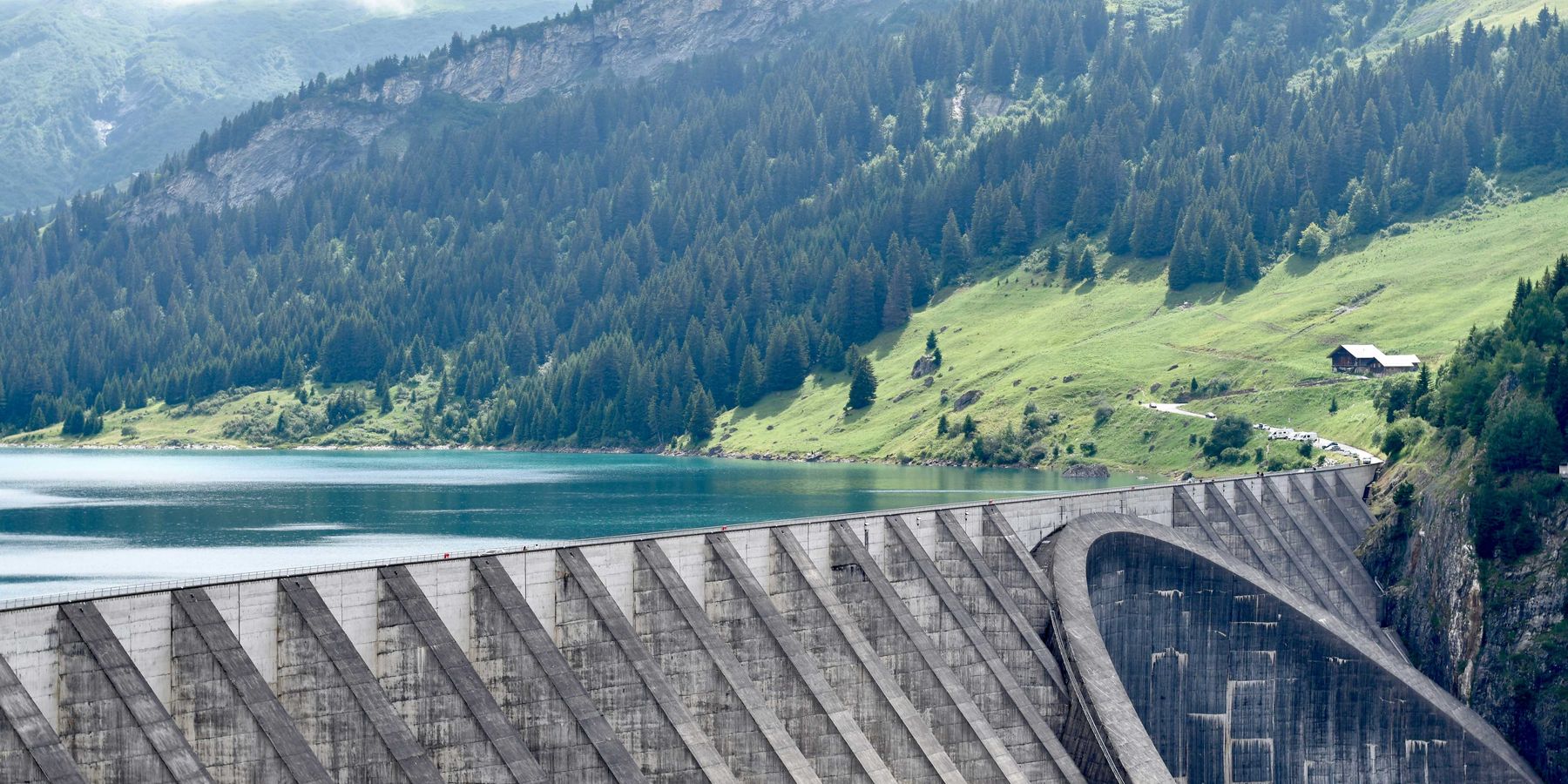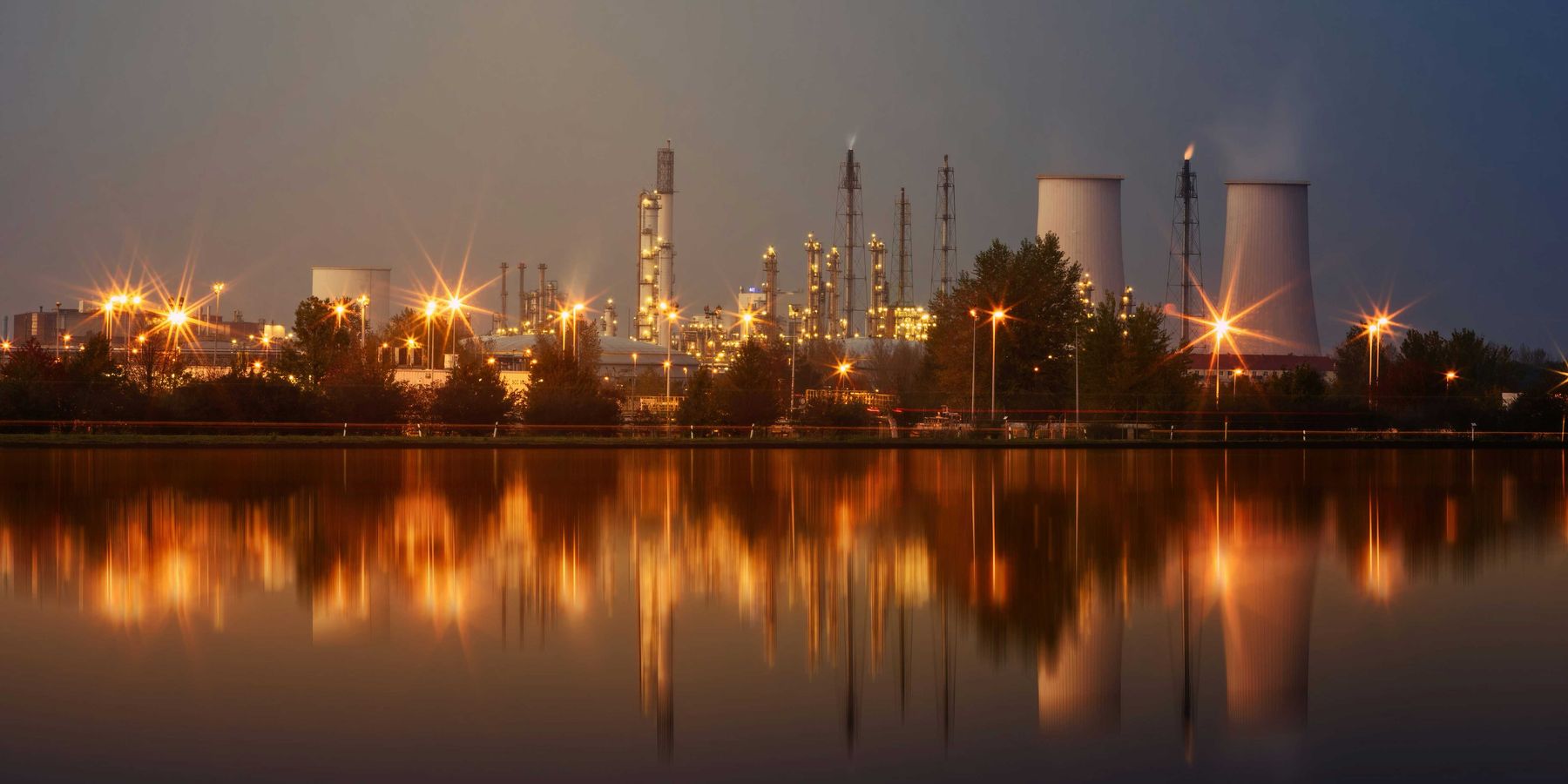The year in sustainable healthcare reporting
53,000 stories, give or take, with a focus on Covid, PPE and carbon emissions.
Let's take a look back at media coverage in 2021 on sustainable healthcare.
We promise, in 2022, to get more sophisticated in these analyses. But even a rough cut at the data yields some pleasant surprises.
For starters, our search of the LexisNexis database found 53,000 articles touching on sustainability and healthcare. The database picks up a lot of press releases and trade articles, so the number of "mainstream" reported articles that, say, our researchers at EHN.org would aggregate is considerably smaller.
Healthcare manufacturing & materials
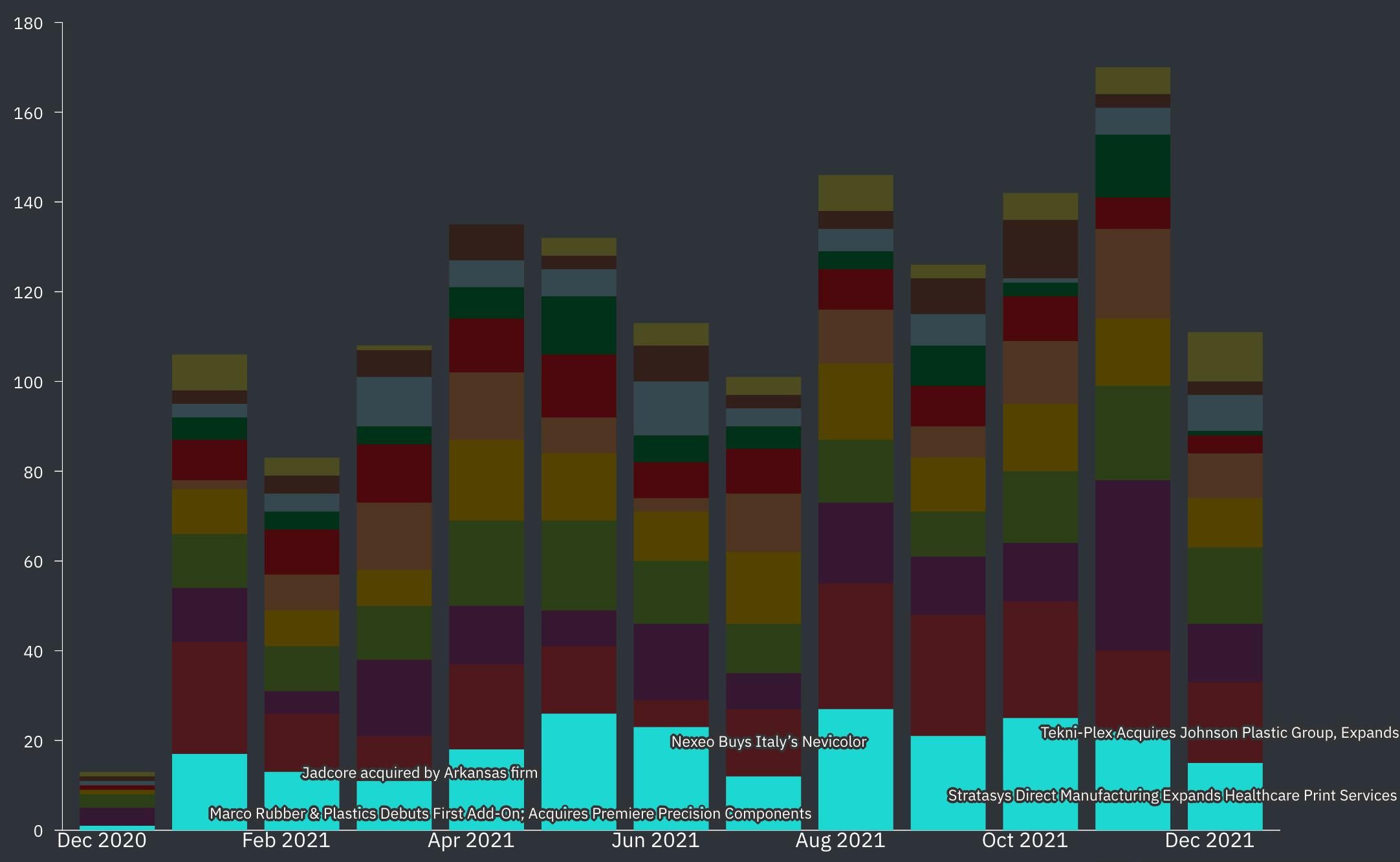
Still, within that pile we can find some insight. Our system sorted those articles into different clusters, based on an AI scan of the article text and coded by color, then plotted them on a timeline.
That colorful graph is shown above. The x-axis shows the months of the year, while the y-axis shows the number of stories published. Several trends are apparent.
The teal blocks at the base of each bar show stories focused on sustainable manufacturing and materials – about 15 percent of the coverage. That coverage was fairly consistent over the year.
Covid-19 waves
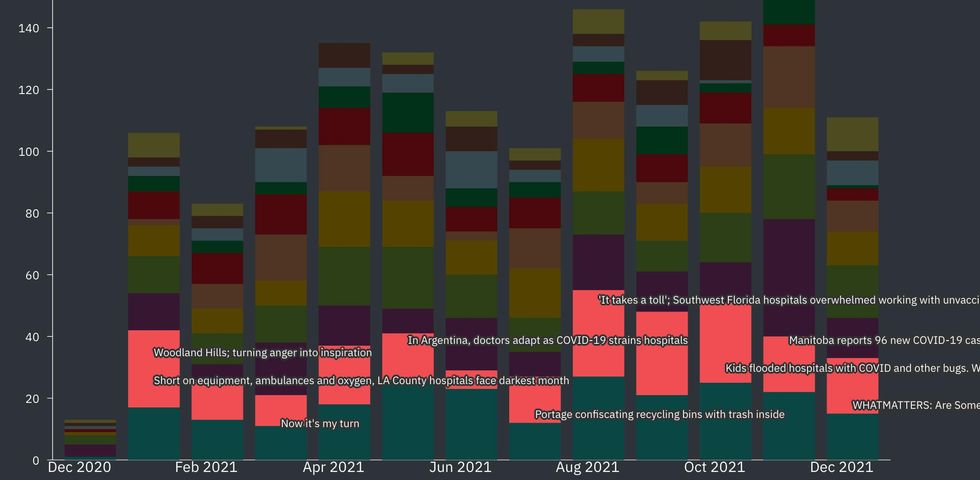
That's not the case for stories about healthcare systems getting swamped by Covid-19, right above the teal, in red blocks. Note, of course, that this is just the fraction of those that also mention sustainability or plastics or recycling; whether even these belong on this graphic is debatable, but what's sobering is that we saw just a brief, one-month ebb in the tsunami of coverage this issue generated – in June, when vaccines were rolling out and we all thought we had this pandemic licked.
Sigh.
Healthcare climate emissions
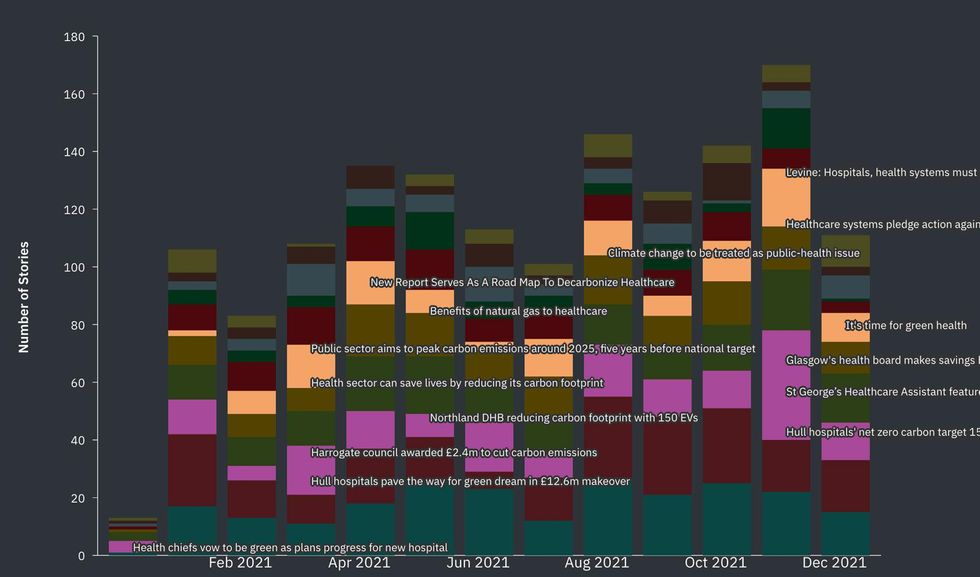
Far more positive are the purple blocks, showing stories about healthcare's carbon footprint, and – two blocks above those – the peach ones showing efforts to reduce healthcare's carbon emissions.
Note the big spike in coverage in November, when nations gathered in Glasgow for the UN climate talks (You may recall that some 50 nations – but not the United States! – pledged to reduce healthcare emissions).
Healthcare waste & recycling
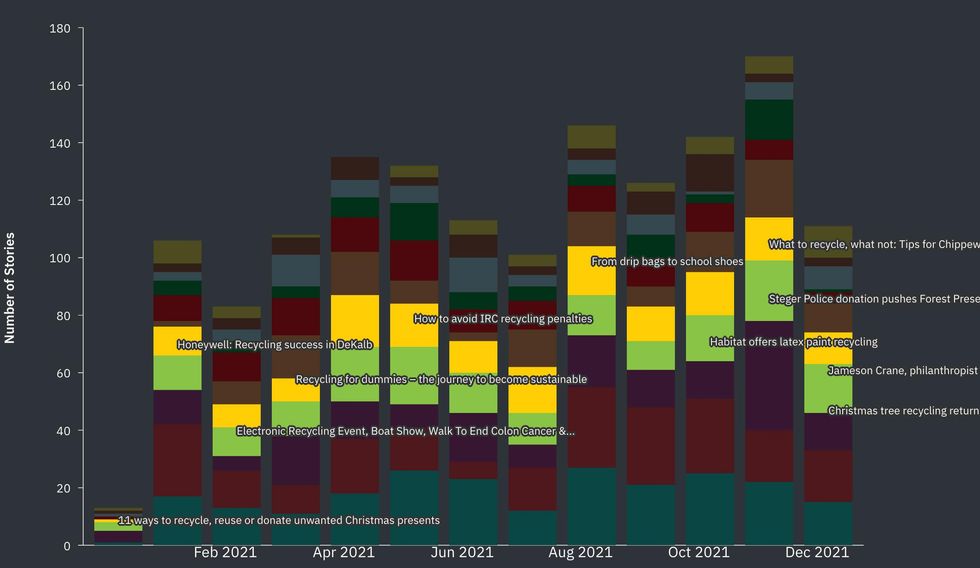
Two final nodes deserve mention: The light green and yellow blocks between the two climate-related ones. They show stories focused on healthcare waste and recycling, respectively, and together they represent almost a quarter of the coverage – a number we at EHN.org found surprising.
We'll be out in 2022 with reports and analyses breaking apart the myth of recycling. But the attention the sector is giving to waste – and the attention that focus is getting in the media – is worth noting.
That's a quick look at the media landscape, and an imprecise one; again, our goal is to get you more detail over this next year, and to do what we can to increase the volume and depth of coverage, so we have more stories to analyze when we do this again at the end of 2022!
Happy New Year!


